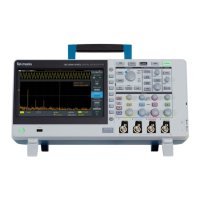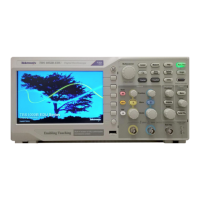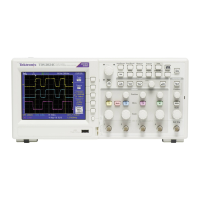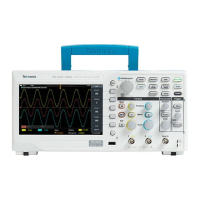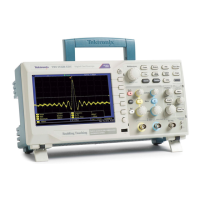Theory of operation
Power supply
The Power Supply board converts AC line voltage to +12 V to power all internal
circuits.
Front End assembly (4 channel models)
The Front End assembly begins with the analog signal path and ends with
differential mode channel signals which are passed to the Main board. The analog
inputs, attenuators, and preamps are contained in this assembly.
Main board
The Main boards contain the following functions:
Acquisition system
The Acquisition system begins with the analog signal path and ends with a
digitized signal in memory. The signal enters a channel input, and then passes
through an attenuator and preamplifier. The analog signal from each preamplifier
goes through a digitizer, and then into acquisition memory. The analog signal
from each preamplifier is also distributed to a trigger circuit.
Trigger system
The Trigger system digitizes the analog signals from the preamplifiers and
routes the digitized signal to the Trigger circuit. Advanced trigger functions are
enabled only when the appropriate application modules and supporting software
are installed.
Display system
The Display system combines live waveform data from acquisition memory with
menus and text, and stores this information in display memory. It then uses this
data to refresh the XGA display module (LCD).
Processor system
The Processor system contains an ARM microprocessor that controls the entire
instrument. The processor system also contains FLASH ROM, system RAM, and
interfaces to USB ports and the Ethernet port.
Power subsystem
T h e M a i n b o a r d c o n v e r t s t h e + 1 2 V p o w e r t o + 5 V, - 5 V, + 3 . 3 V, + 2 . 5 V, + 2 V,
+1.8 V, +1.5 V, +1.1 V, 1 V, and 0.75 V, used by circuitry throughout the system.
The Front Panel board is powered on at all times when AC power is connected to
the unit.
I/O ports (2 channel
models)
The Main board provides USB ports (Host and Device), an Ethernet port (LAN),
and an A ux Out trigger output connections.
2–2 TBS2000 Series Service Manual
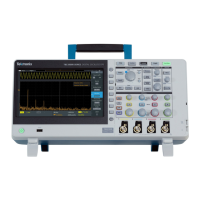
